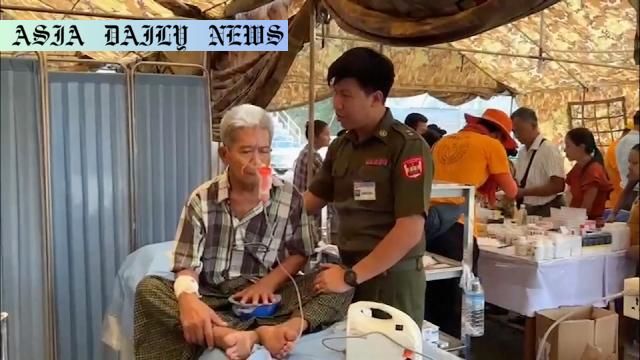Medical Support – A senior UN official in Myanmar is urging immediate medical aid as 80% of buildings in the Sagaing region are heavily damaged.
Medical support is urgently needed for earthquake-affected communities in central Myanmar.
At least 80% of buildings in the Sagaing region were severely damaged, leaving individuals in makeshift shelters.
Myanmar’s fragile health system, worsened by a military coup, underscores the need for immediate international assistance.

Dire Impact of the Recent Earthquake in Myanmar
Myanmar has recently been ravaged by a powerful earthquake that left a devastating impact on the Sagaing region, situated near the quake’s epicenter. As per the UNDP Resident Representative, Titon Mitra, the crisis is intensifying due to the lack of immediate medical support and resources. The earthquake has caused catastrophic destruction, with over 80% of buildings reported to be heavily damaged. This has left thousands of people without proper shelter, forcing them to live in makeshift accommodations including car parks, temporary shelters, and even roadside camps.
The situation is dire as businesses have been severely disrupted, and transportation infrastructure remains compromised in many affected areas. Access to essential supplies, food, and clean water is becoming an uphill battle for the affected individuals. The lack of sanitation and exposure to hazardous conditions, such as dust from crumbled buildings, is exacerbating the health crisis. Coupled with emotional distress and trauma, the physical and mental well-being of residents is in jeopardy.
The Collapsing Health System in Myanmar
Amidst this unfolding crisis, the fragility of Myanmar’s healthcare system has come into sharp focus. The ongoing impact of the military coup, which took place four years ago, has left the country’s health framework under immense strain. According to Mitra, years of the civil disobedience movement have led to an exodus of qualified medical professionals from public hospitals and clinics. Doctors, nurses, and healthcare staff who opted to support pro-democracy protests have left a void in the already crippled system.
Medical aid is desperately needed not only to treat injuries caused by the earthquake but also to alleviate illnesses stemming from unsanitary conditions and unsafe drinking water. The burden on the existing healthcare infrastructure has reached a tipping point, with limited operational capacity to cater to the growing needs. Furthermore, emotional and psychological trauma resulting from the disaster has created a demand for mental health services that the system is ill-prepared to address.
Urgent Need for Global Intervention
The United Nations is calling on the international community to provide medical support and resources to Myanmar as a matter of urgency. Mitra emphasized the need for foreign aid to stabilize the affected regions and ensure survival and recovery. What’s critically required are mobile medical units, clean water supplies, temporary shelters, and funding to rebuild healthcare infrastructure in the coming months. Socio-economic recovery will also necessitate repairing transportation links and enabling the affected population to resume their small businesses and farming activities.
Long-term recovery will also require sustained efforts, such as training new medical professionals to cover the workforce depleted during the coup years. Governments, non-governmental organizations, and international institutions need to collaborate to provide Myanmar with the assistance it needs to rebuild and recover fully.
Commentary
The Fragility of Systems Under Catastrophic Events
Reading about the humanitarian crisis in Myanmar following the earthquake unveils deeper systemic vulnerabilities in a country already reeling from political unrest. One prominent concern that stands out is how natural disasters tend to unravel the fragility of basic infrastructure and health systems. In this instance, it becomes clear how years of instability triggered by the military coup have left little to no resilience in their systems, from healthcare to transportation. The earthquakes may have been a natural disaster, but the consequences feel magnified by systemic neglect and socio-political chaos.
The Importance of a Global Response
The international community undoubtedly has a moral and ethical responsibility to step in during humanitarian crises of this magnitude. While Myanmar’s medical field has been left ineffective, external aid, in the form of mobile health units and trauma relief efforts, could be a lifeline for thousands stranded in the Sagaing region. The timely intervention by the global medical potential, along with disaster management experts, could help mitigate avoidable deaths and fast-track recovery.
The Takeaway
This scenario serves as a stark reminder that nations must prioritize sturdy frameworks for disaster preparedness and response, irrespective of political climates. Myanmar now faces dual challenges—recovering from natural devastation while also combating the shadows of systemic collapse brought about over the years. This double burden reaffirms the importance of long-term partnerships and aid to ensure stability and resilience in regions prone to such calamities.


